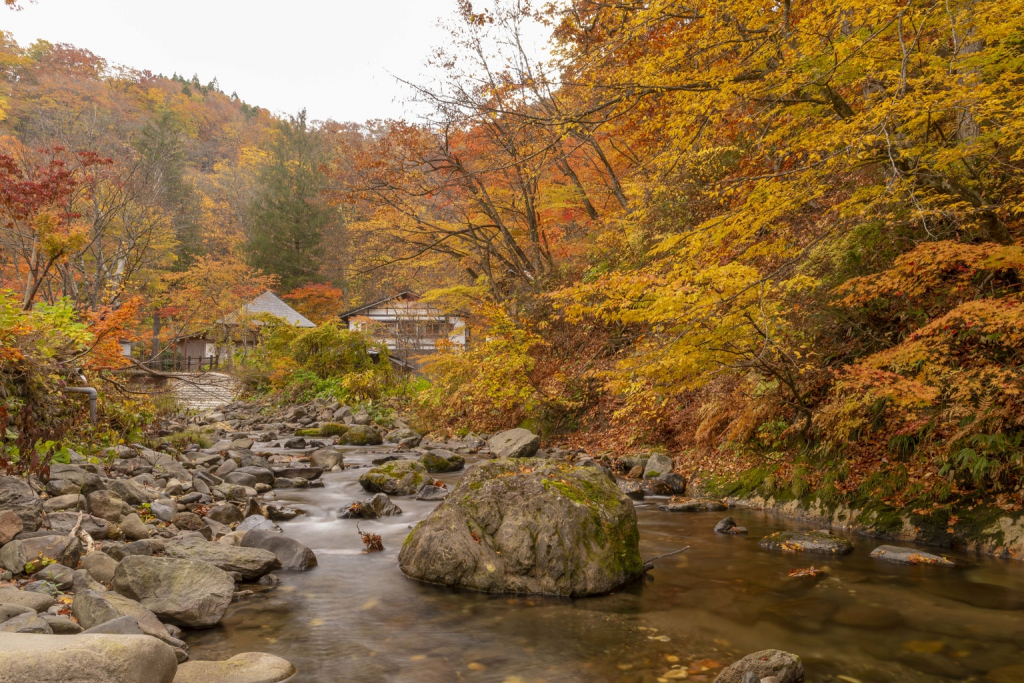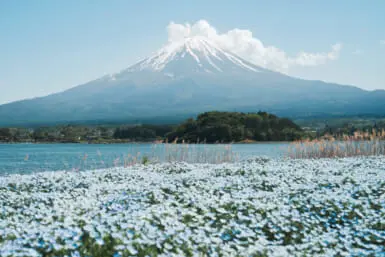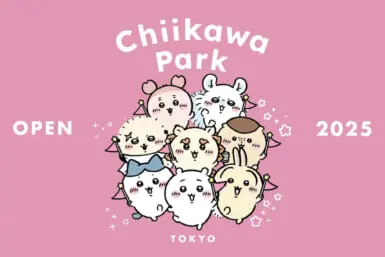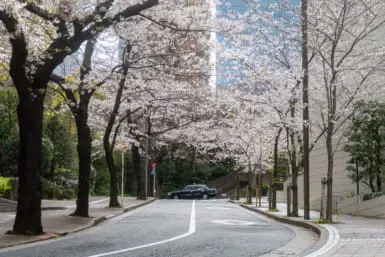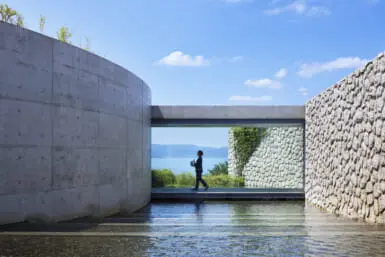Said the late, great comedian Bill Hicks, “The world is like a ride in an amusement park… and the ride goes up and down and round and round.”
This pompously profound soliloquy wasn’t going through my mind at the moment I was standing on a bridge over the Aoni River at midnight, staring blearily at the infinite stars above, my Japanese robe akimbo, exposing unwieldy chest hair and fleshy patches the modern world wasn’t meant to see.
But looking back, Hicks’ existential ode to life perception aptly describes where my headspace was during my stay at Aoni Onsen deep in the mountains of Aomori Prefecture.

Photo by Koji Nishikawa
Lights Out
There is no electricity at Aoni Onsen. Since there are no lights, ubiquitous kerosene lanterns hang from the walls and ceilings – earning the establishment its common nickname, the “Lamp Inn.” The flicker of the soft yellow light makes the shadows dance, and the waxy smell of the kerosene is pungent throughout this traditional ryokan that has gained in popularity amongst the international crowd searching for the ultimate respite from the 21st century’s online rat race.
The inn was built in 1931 in the Minami Hakkoda mountains when the entire remote area in the most northern reaches of Honshu – Japan’s main island – lacked electricity. When power lines finally reached Aoni Onsen, the supply was intermittent, and the owners decided no power was better than unreliable power. By the 1970s Zen and mindfulness became en vogue, and Aoni Inn earned a reputation as a meditative retreat. So the power stayed off.

Photo by Koji Nishikawa
Just Me and My Tanuki
We made the winding drive down the inn’s 6km private road just after dark. The headlights caught a tanuki – a wild Japanese raccoon dog – scuttling into the underbrush alongside the road. The winters are long in Aomori, and the snow deep, and so Aoni Inn does provide a snowmobile shuttle for guests when necessary.
When we arrived at the inn we were surrounded by darkness except for a lone kerosene lantern hanging from a pole in the courtyard. Once inside, we saw an elaborate kerosene lantern chandelier hanging above the lobby, and a crank telephone adorning the wall.
Staff wielded hand-crank flashlights as they led me to room 207, a corner room on the second floor that is supposed to be the best the inn has to offer as its windows overlook two views of the Aoni River flowing outside, and the gorgeous fall foliage that blazed red and orange on this late October day. The room was a small, traditional tatami room with little in terms of furnishing or decoration. But with most of the hotel bathed in darkness, the décor isn’t why we were there.

Photo by Koji Nishikawa
Taste of Aomori
Before we explored the grounds, we sat around a traditional sunken hearth called a kotatsu for a kaiseki meal loaded with vegetables and mushrooms foraged from the mountains. The simple servings included the local delicacy called ika menchi (deep-fried minced squid fritters), duck nabe, bracken sprouts preserved since spring and skewered rock salmon caught fresh from a local river. We paired the dinner with delicious Aomori sake, particularly the premium Narumi Jozo-ten brewed in nearby Kuroishi.
The bath tour started outside the front door of Aoni Onsen. A relatively new building houses large, standard men’s and women’s hot springs baths separated by a wall. It is a good place to get warmed up for the sensory experiences the other three baths provide.
Inside the main building is the inn’s original hot spring bath. Until the inn was doubled in size in 1973, this small tub made from a local conifer tree was the only hot spring bath available. The wood has antibacterial properties, and the mineral-rich spring water was piping hot, and steam swirled above, filling the room.
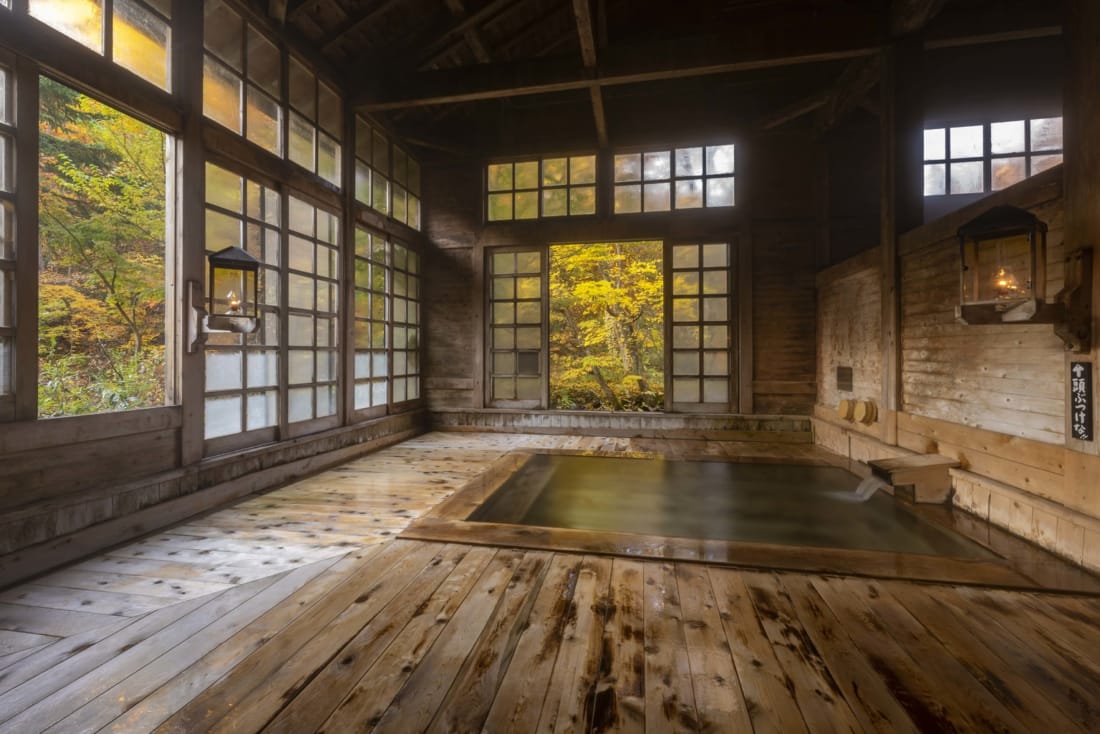
Photo by Koji Nishikawa
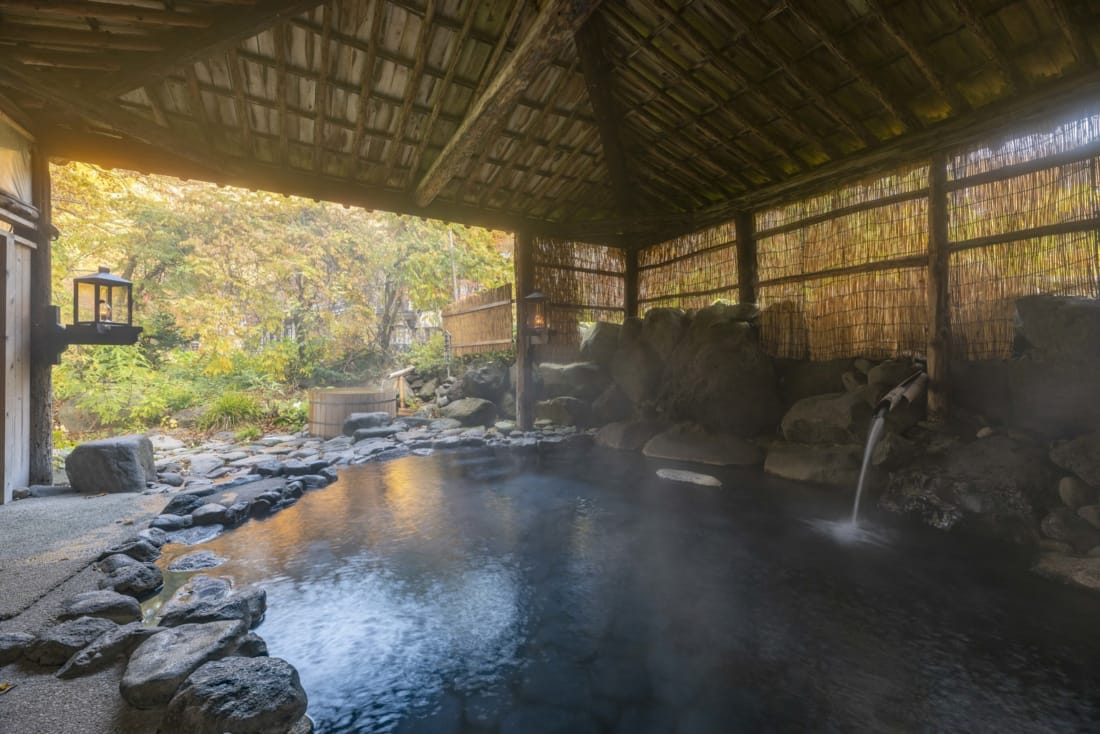
Photo by Koji Nishikawa
Slip Back in Time
The next two baths are located out the back door. Slip into rubber slippers and cross the walking bridge over the cascading Aoni River. To the right is the indoor communal bath, shared by both men and women (though at certain times the bath is open only to women). The large pool is circled with rocks, and a private one-person wooden tub is located on the back patio, allowing you to hang your feet over the rim and gaze at the stars above.
Behind the communal bath and to the left is the showcase bath of Aoni Inn. Here the spacious changing rooms are stylish and modern. There is an indoor bath, but then the sliding doors lead to an outdoor paradise. Here the rock-lined hot springs bath – with men’s and women’s baths separated by a wall – are large enough to comfortably hold one person and offer a breathtaking view of the 30-meter-tall Ryugataki – or Dragon Waterfall.

Photo by Koji Nishikawa

Photo by Koji Nishikawa
The Dragon Women
During the Meiji Era, women donned head to toe in white gowns made the long journey down the Aoni River to the Dragon Waterfall to worship in secret. Women were banned from climbing the sacred Mount Iwaki, and the secluded location made Dragon Waterfall – which looks like a long, thin dragon snaking up the cliff face – the ideal place to bathe and pray for good fortune.
The picturesque bath, and stargazing on the Aoni River bridge, was the perfect way to end the night. Just don’t get lost in the dark on your way back to the hotel, or wander into one of the four cottages Aoni Onsen rents out to large groups.
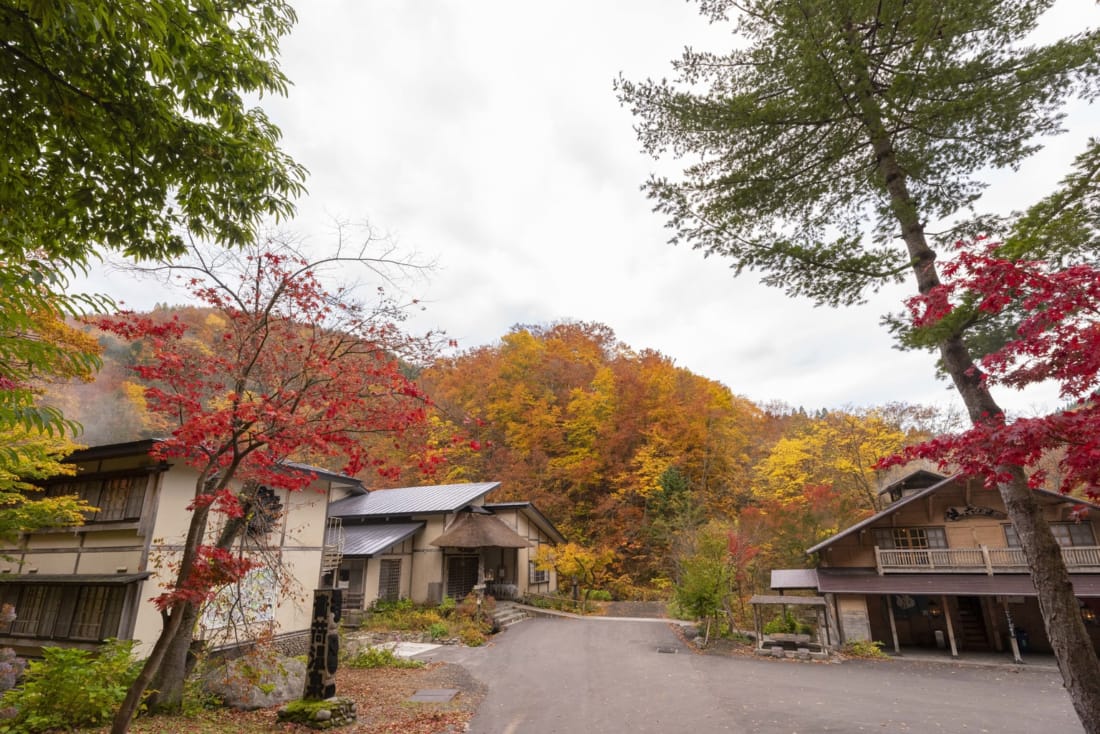
Photo by Koji Nishikawa
Returning to Modern Conveniences
The inn does have enough power supply to meet the government’s requirements for emergency lighting and to provide heat during the winter to keep water pipes from freezing. The shared bathrooms have modern toilets with heated seats, and there are vending machines outside. Still, there is no WiFi or cell phone service.
Driving away from the onsen the next morning, my heart dropped when my smartphone gained internet access, and the email notifications started piling up, and the ride once again started going round and round.
Find out more at en-aomori.com/hotspring-021.html

